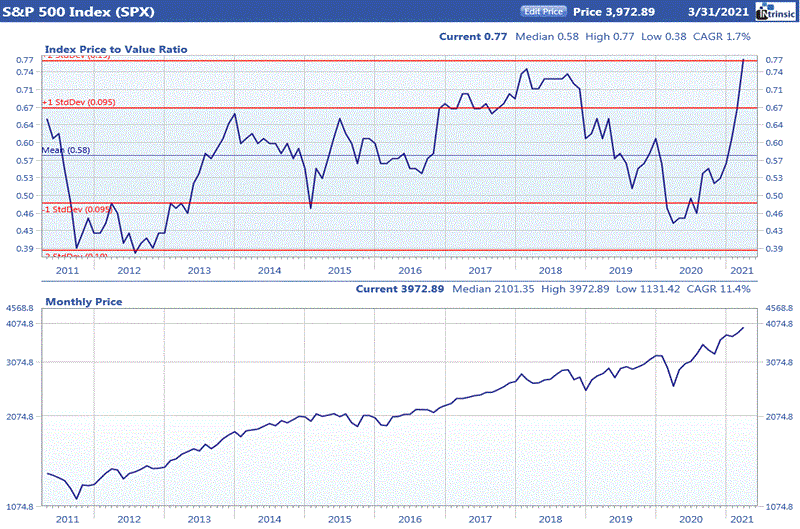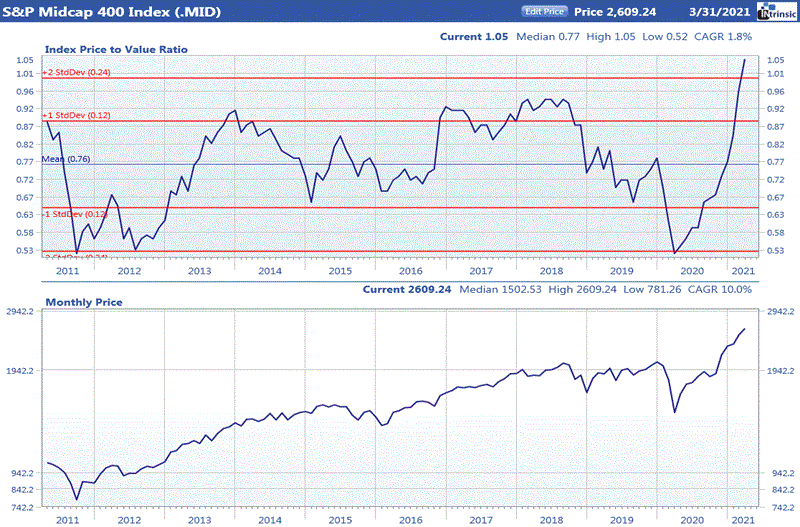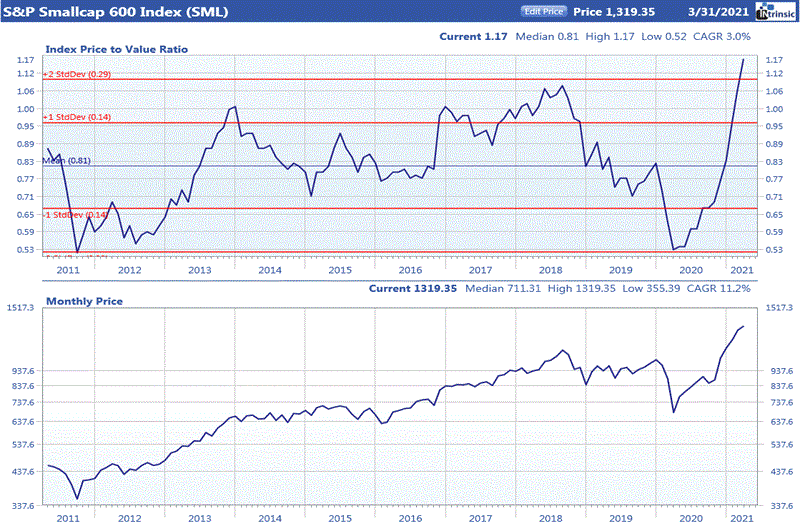Market Briefing
April 2021
Stock prices continued their advance in March with average performance about equal among the market capitalization segments. Economic news was mostly positive during the month. Higher manufacturing index readings, rising factory orders and a surprisingly strong payrolls number supported the economic recovery view. Higher treasury yields and inflation fears tended to dampen the performance of large cap growth stocks. However, the CPI report for February showed minimal inflation. Housing starts and home sales declined in February. The $1.9 Trillion COVID relief package was passed through Congress and signed into law. Investors favored value stocks during the month with operating earnings yield, p/e ratio, price/sales and price/cash flow among the top performing stock selection factors. Growth and momentum stocks had the weakest performance in March. Projected growth rate, price momentum and sales growth rates were among the the factors at the bottom of the performance list. Most of the industry groups we cover had positive average price gains for the month. Among the top performing groups were in the materials sector and included forest products, aluminum and steel. Oil related stocks were the poorest performers for the month. Medical related groups and drugs were also among the bottom industry groups.
Value of the Market



Ford’s price to value ratio (PVA) is computed by dividing the price of a company’s stock by the value derived from a proprietary intrinsic value model. A PVA greater than 1.00 indicates that a company is overpriced while a PVA less than 1.00 implies that a stock is trading below the level justified by its earnings, quality rating, dividends, projected growth rate, and prevailing interest rates. While looking at the PVA for an individual company can give a good indication of its value, the average PVA for the market as a whole can provide insight into current valuation levels.
Source: Ford Equity Research
